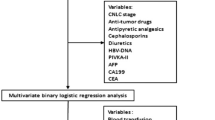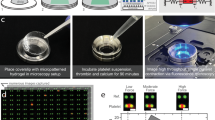Abstract
Background:
Immune thrombocytopenic purpura (ITP) is characterized by reduced platelet count secondary to immune-mediated destruction, this results in an increased bleeding risk. Autoantibodies binding to platelets tag them for premature destruction in the spleen. For this reason, splenectomy is often performed as treatment of chronic forms of disease that are resistant to pharmacological therapy.
Methods:
We studied 30 patients with ITP and compared them with age-matched controls.
Results:
We show that B cells of patients with chronic ITP are intrinsically hyperreactive, producing more than normal IgG in vivo and plasma cells in vitro. In normal individuals after splenectomy, a significant depletion of memory B cells is observed, associated with loss of reactivity to CpG oligodeoxynucleotide and consequent inability to form antibody-producing cells. In Enzyme-Linked ImmunoSpot Methods, we compared three splenectomized ITP patients relapsing after surgery, 30 healthy controls, and 37 individuals splenectomized for trauma, spherocytosis, thalassemia, nonhematological tumor, and other diseases.
Conclusions:
We confirmed that B cells of ITP patients remain hyperreactive in vitro and form high numbers of antibody-producing cells after splenectomy. Thus, chronic ITP may be associated with intrinsic B-cell hyperfunction, leading to the production of antibodies with multiple specificities including that against platelets.
Similar content being viewed by others
Log in or create a free account to read this content
Gain free access to this article, as well as selected content from this journal and more on nature.com
or
References
Glanz J, France E, Xu S, Hayes T, Hambidge S. A population-based, multisite cohort study of the predictors of chronic idiopathic thrombocytopenic purpura in children. Pediatrics 2008;121:e506–12.
Rodeghiero F, Stasi R, Gernsheimer T, et al. Standardization of terminology, definitions and outcome criteria in immune thrombocytopenic purpura of adults and children: report from an international working group. Blood 2009;113:2386–93.
Kühne T, Imbach P, Bolton-Maggs PH, Berchtold W, Blanchette V, Buchanan GR ; Intercontinental Childhood ITP Study Group. Newly diagnosed idiopathic thrombocytopenic purpura in childhood: an observational study. Lancet 2001;358:2122–5.
Giordano P, Lassandro G, Giona F, et al. ITP-QoL questionnaire for children with immune thrombocytopenia: Italian version validation’s. Pediatr Hematol Oncol 2014;31:534–47.
Stasi R, Evangelista ML, Stipa E, Buccisano F, Venditti A, Amadori S. Idiopathic thrombocytopenic purpura: current concepts in pathophysiology and management. Thromb Haemost 2008;99:4–13.
De Mattia D, Del Principe D, Del Vecchio GC, et al. Acute childhood idiopathic thrombocytopenic purpura: AIEOP consensus guidelines for diagnosis and treatment. Associazione Italiana di Ematologia e Oncologia Pediatrica. Haematologica 2000;85:420–4.
De Mattia D, Del Vecchio GC, Russo G, et al.; AIEOP-ITP Study Group. Management of chronic childhood immune thrombocytopenic purpura: AIEOP consensus guidelines. Acta Haematol 2010;123:96–109.
Yang R, Han ZC. Pathogenesis and management of chronic idiopathic thrombocytopenic purpura: an update. Int J Hematol 2000;71:18–24.
Imbach P, Kühne T, Müller D, et al. Childhood ITP: 12 months follow-up data from the prospective registry I of the Intercontinental Childhood ITP Study Group (ICIS). Pediatr Blood Cancer 2006;46:351–6.
Benesch M, Kerbl R, Lackner H, et al. Low-dose versus high-dose immunoglobulin for primary treatment of acute immune thrombocytopenic purpura in children: results of a prospective, randomized single-center trial. J Pediatr Hematol Oncol 2003;25:797–800.
Carcao MD, Zipursky A, Butchart S, Leaker M, Blanchette VS. Short-course oral prednisone therapy in children presenting with acute immune thrombocytopenic purpura (ITP). Acta Paediatr Suppl 1998;424:71–4.
Aronis S, Platokouki H, Avgeri M, Pergantou H, Keramidas D. Retrospective evaluation of long-term efficacy and safety of splenectomy in chronic idiopathic thrombocytopenic purpura in children. Acta Paediatr 2004;93:638–42.
D’Orazio JA, Neely J, Farhoudi N. ITP in children: pathophysiology and current treatment approaches. J Pediatr Hematol Oncol 2013;35:1–13.
Sarpatwari A, Provan D, Erqou S, Sobnack R, David Tai FW, Newland AC. Autologous 111 In-labelled platelet sequestration studies in patients with primary immune thrombocytopenia (ITP) prior to splenectomy: a report from the United Kingdom ITP Registry. Br J Haematol 2010;151:477–87.
Olsson B, Andersson PO, Jernås M, et al. T-cell-mediated cytotoxicity toward platelets in chronic idiopathic thrombocytopenic purpura. Nat Med 2003;9:1123–4.
Provan D, Stasi R, Newland AC, et al. International consensus report on the investigation and management of primary immune thrombocytopenia. Blood 2010;115:168–86.
Semple JW, Provan D. The immunopathogenesis of immune thrombocytopenia: T cells still take center-stage. Curr Opin Hematol 2012;19:357–62.
George JN. Management of immune thrombocytopenia–something old, something new. N Engl J Med 2010;363:1959–61.
Patel VL, Mahévas M, Lee SY, et al. Outcomes 5 years after response to rituximab therapy in children and adults with immune thrombocytopenia. Blood 2012;119:5989–95.
Audia S, Samson M, Guy J, et al. Immunologic effects of rituximab on the human spleen in immune thrombocytopenia. Blood 2011;118:4394–400.
Mahévas M, Patin P, Huetz F, et al. B cell depletion in immune thrombocytopenia reveals splenic long-lived plasma cells. J Clin Invest 2013;123:432–42.
Capolunghi F, Rosado MM, Cascioli S, et al. Pharmacological inhibition of TLR9 activation blocks autoantibody production in human B cells from SLE patients. Rheumatology (Oxford) 2010;49:2281–9.
Capolunghi F, Cascioli S, Giorda E, et al. CpG drives human transitional B cells to terminal differentiation and production of natural antibodies. J Immunol 2008;180:800–8.
Bernasconi NL, Traggiai E, Lanzavecchia A. Maintenance of serological memory by polyclonal activation of human memory B cells. Science 2002;298:2199–202.
Kruetzmann S, Rosado MM, Weber H, et al. Human immunoglobulin M memory B cells controlling Streptococcus pneumoniae infections are generated in the spleen. J Exp Med 2003;197:939–45.
Rosado MM, Gesualdo F, Marcellini V, et al. Preserved antibody levels and loss of memory B cells against pneumococcus and tetanus after splenectomy: tailoring better vaccination strategies. Eur J Immunol 2013;43:2659–70.
Manz RA, Löhning M, Cassese G, Thiel A, Radbruch A. Survival of long-lived plasma cells is independent of antigen. Int Immunol 1998;10:1703–11.
Manz RA, Thiel A, Radbruch A. Lifetime of plasma cells in the bone marrow. Nature 1997;388:133–4.
Tarlinton D, Radbruch A, Hiepe F, Dörner T. Plasma cell differentiation and survival. Curr Opin Immunol 2008;20:162–9.
Yoshida T, Mei H, Dörner T, et al. Memory B and memory plasma cells. Immunol Rev 2010;237:117–39.
Di Sabatino A, Carsetti R, Corazza GR. Post-splenectomy and hyposplenic states. Lancet 2011;378:86–97.
Capolunghi F, Rosado MM, Sinibaldi M, Aranburu A, Carsetti R. Why do we need IgM memory B cells? Immunol Lett 2013;152:114–20.
Aranburu A, Ceccarelli S, Giorda E, Lasorella R, Ballatore G, Carsetti R. TLR ligation triggers somatic hypermutation in transitional B cells inducing the generation of IgM memory B cells. J Immunol 2010;185:7293–301.
Daridon C, Loddenkemper C, Spieckermann S, et al. Splenic proliferative lymphoid nodules distinct from germinal centers are sites of autoantigen stimulation in immune thrombocytopenia. Blood 2012;120:5021–31.
McKenzie CG, Guo L, Freedman J, Semple JW. Cellular immune dysfunction in immune thrombocytopenia (ITP). Br J Haematol 2013;163:10–23.
Emmerich F, Bal G, Barakat A, et al. High-level serum B-cell activating factor and promoter polymorphisms in patients with idiopathic thrombocytopenic purpura. Br J Haematol 2007;136:309–14.
Figgett WA, Vincent FB, Saulep-Easton D, Mackay F. Roles of ligands from the TNF superfamily in B cell development, function, and regulation. Semin Immunol 2014;26:191–202.
Author information
Authors and Affiliations
Corresponding author
Rights and permissions
About this article
Cite this article
Giordano, P., Cascioli, S., Lassandro, G. et al. B-cell hyperfunction in children with immune thrombocytopenic purpura persists after splenectomy. Pediatr Res 79, 262–270 (2016). https://doi.org/10.1038/pr.2015.211
Received:
Accepted:
Published:
Issue date:
DOI: https://doi.org/10.1038/pr.2015.211
This article is cited by
-
A functional spleen contributes to afucosylated IgG in humans
Scientific Reports (2021)
-
Relationship of primary immune thrombocytopenic purpura and atopia among children: a case control study
Scientific Reports (2020)



